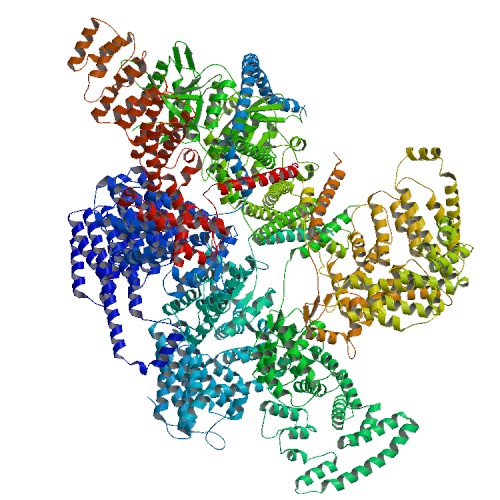Summary of the article Structure of the RNA Specialized Translation Initiation Element that Recruits eIF3 to the 5′-UTR of c-Jun. Walker MJ, Shortridge MD, Albin DD, Cominsky LY, Varani G. J Mol Biol. 2020 Mar 27;432(7):1841-1855. doi: 10.1016/j.jmb.2020.01.001. Epub 2020 Jan 14. PMID: 31953146 https://pubmed.ncbi.nlm.nih.gov/31953146/
The cell has some specialized molecules called “eIF3s”, whose main function is to link the particles responsible for protein synthesis: the mRNA and the ribosome. The eIF3 factor binds to the mRNA and the ribosome and links them together when protein synthesis is initiated.
Generally, the eIF3 factors are produced in small amounts, so the cell can control when and how much of each protein is made. If the quantity of eIF3 factors is increased relative to its normal levels, the cell will overproduce proteins involved in cell proliferation, which will cause cancer.
This study focused on determining the 3D structure of the area of the mRNA molecule coding for the c-Jun oncogene where the eIF3 factor binds, using NMR (Nuclear Magnetic Resonance). Understanding the 3D molecular structure of these binding areas will shed light on the type of molecules that could be used to obstruct such interaction. For example, molecules that could bind to the mRNA instead of the eIF3 factors would inhibit the function of eIF3 factors. A molecule that can prevent the activities of eIF3 factors on cancerous cells, would also restrain cell proliferation, thereby slowing the cancer. Thus, a molecule that can bind to the mRNA instead of the eIF3 factor could be used as a cancer therapy.
The study found that the structure of the c-Jun mRNA where eIF3 binds is very similar to an area in the genetic material of the hepatitis C virus (HCV), where eIF3 also binds. Resolving the 3D structure of this area will shed light on the mechanisms of interaction between the eIF3 factor and the mRNA. This, in turn, will help with the search for appropriate inhibitors of the eIF3 factors, which, in the long term, could be used as a therapy to control the progression of cell proliferation in cancer patients.

